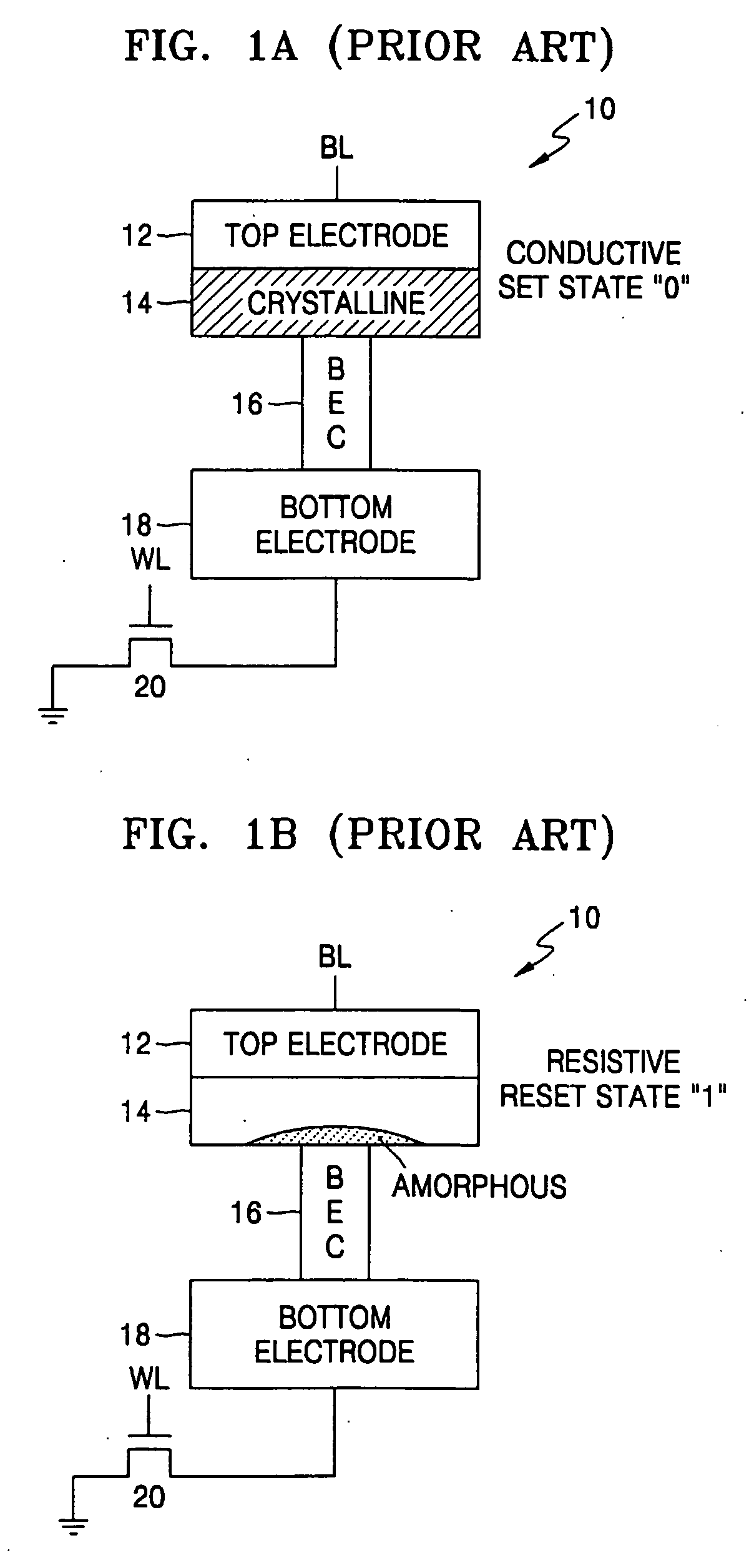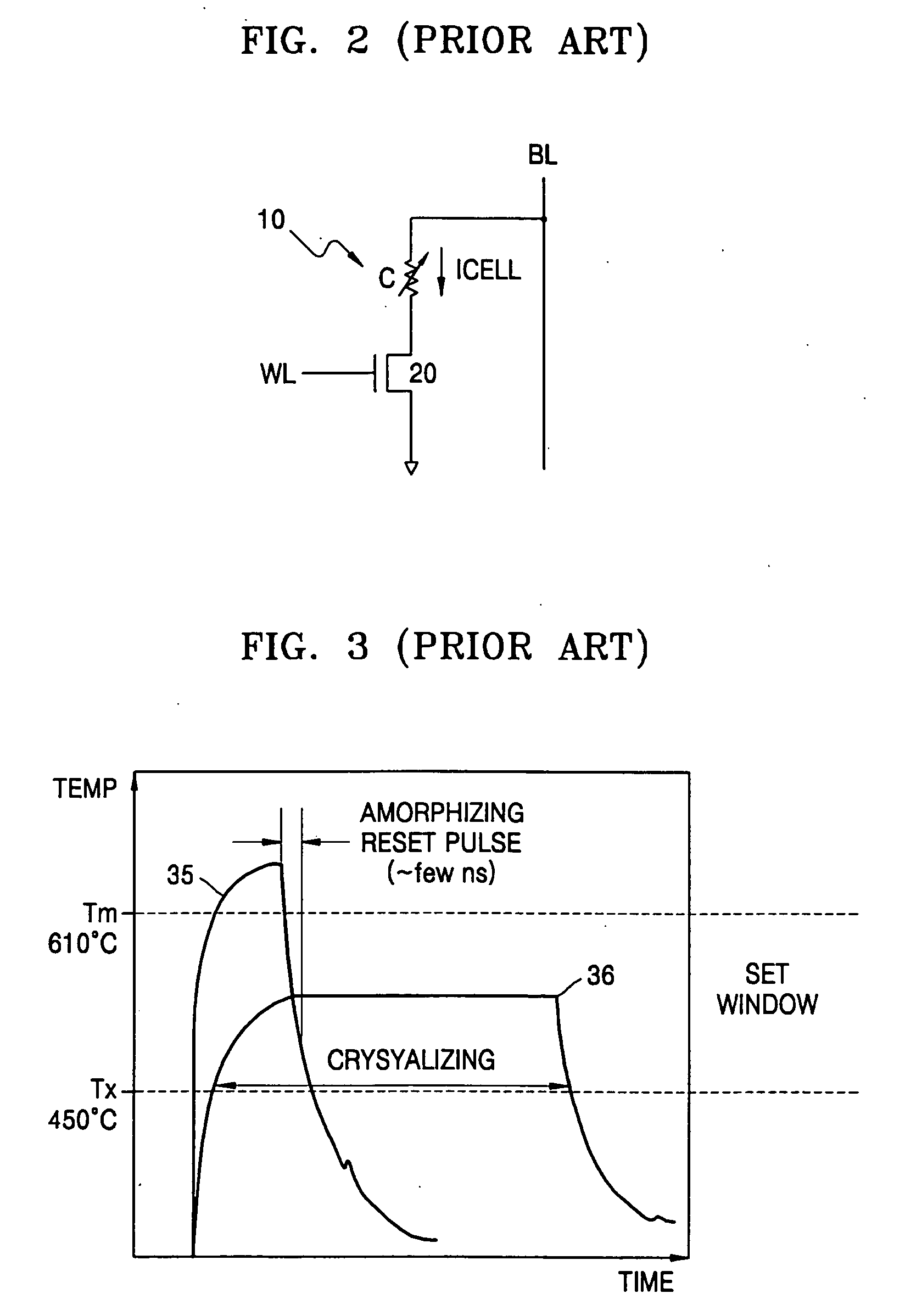Phase-change semiconductor memory device and method of programming the same
a semiconductor memory and phase-change technology, applied in semiconductor devices, digital storage, instruments, etc., can solve the problems of fluctuation in the voltage level of power supply, insufficient write current, and increasing difficulty in generating sufficient pram programming currents from the power supply of such devices
- Summary
- Abstract
- Description
- Claims
- Application Information
AI Technical Summary
Benefits of technology
Problems solved by technology
Method used
Image
Examples
Embodiment Construction
[0029] Hereinafter, exemplary embodiments of the present invention will be described in detail with reference to the accompanying drawings. The drawings are for illustrative purposes only, and are not intended to limit the scope of the invention. FIG. 5 is a circuit diagram of a phase-change semiconductor memory device 500 according to an embodiment of the present invention.
[0030] Referring to FIG. 5, the semiconductor memory device 500 of the illustrated example includes a boosting circuit 510, a write driver 520, and a memory cell array 550.
[0031] The boosting circuit 510 outputs a boosted voltage VPP which is of a higher voltage than an input first voltage V1. The structural configurations of circuits which can function as the boosting circuit 510 are well understood by those skilled in the art, and accordingly, a detailed description thereof is omitted here.
[0032] The memory cell array 550 of this example includes a plurality of phase-change memory cells C1-Cm, diodes D1-Dm, ...
PUM
 Login to View More
Login to View More Abstract
Description
Claims
Application Information
 Login to View More
Login to View More - R&D
- Intellectual Property
- Life Sciences
- Materials
- Tech Scout
- Unparalleled Data Quality
- Higher Quality Content
- 60% Fewer Hallucinations
Browse by: Latest US Patents, China's latest patents, Technical Efficacy Thesaurus, Application Domain, Technology Topic, Popular Technical Reports.
© 2025 PatSnap. All rights reserved.Legal|Privacy policy|Modern Slavery Act Transparency Statement|Sitemap|About US| Contact US: help@patsnap.com



